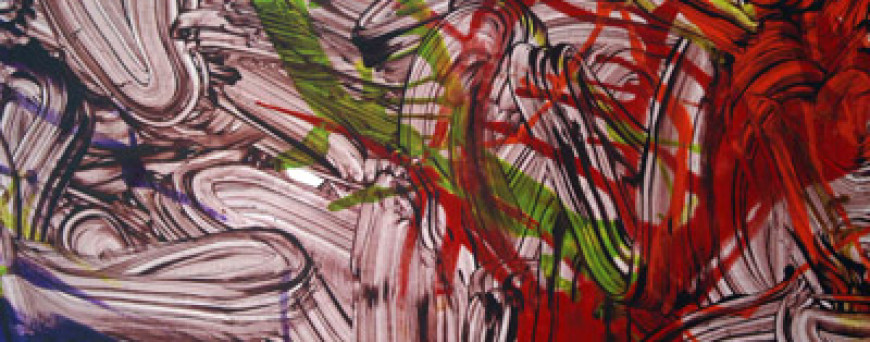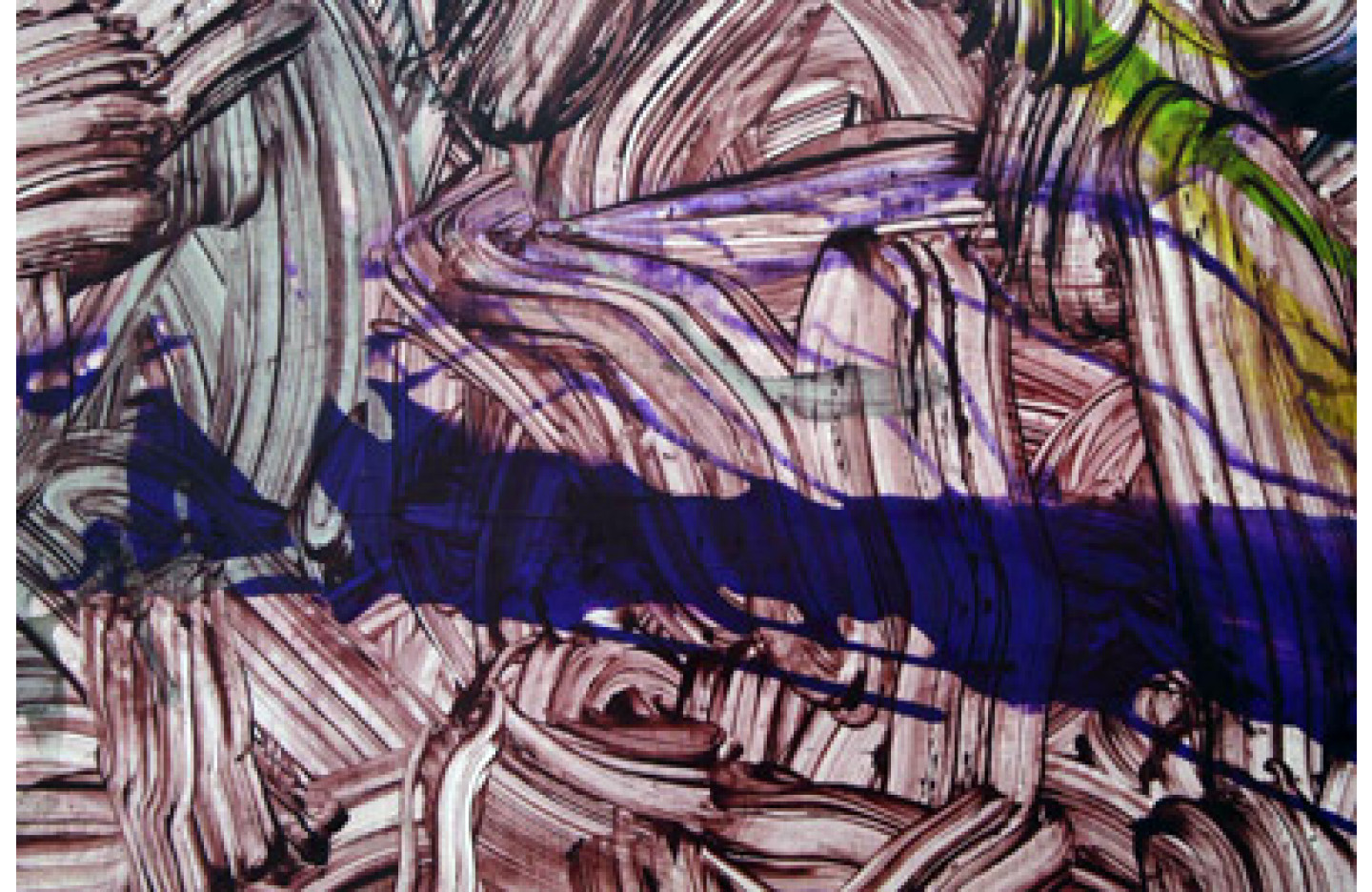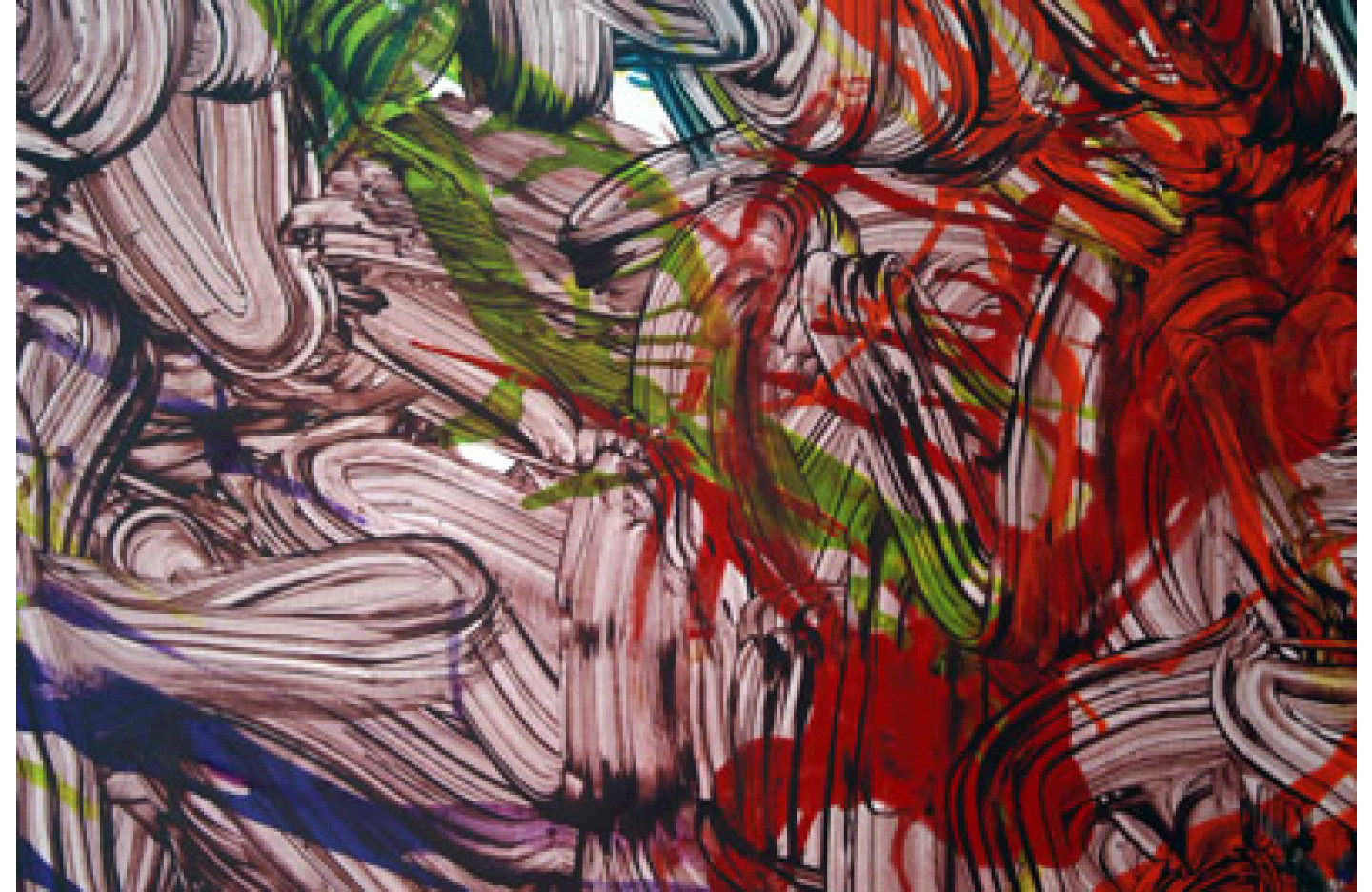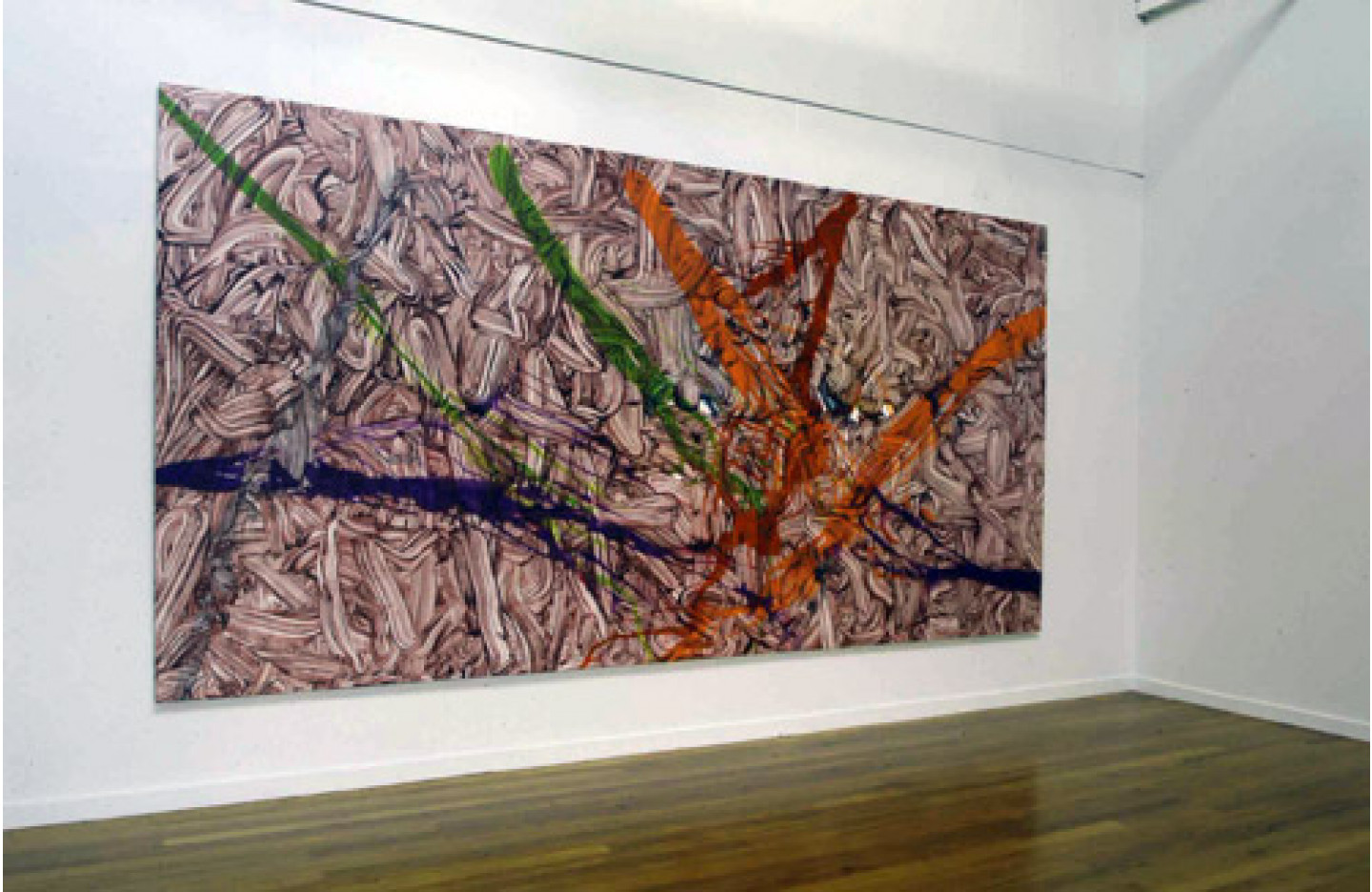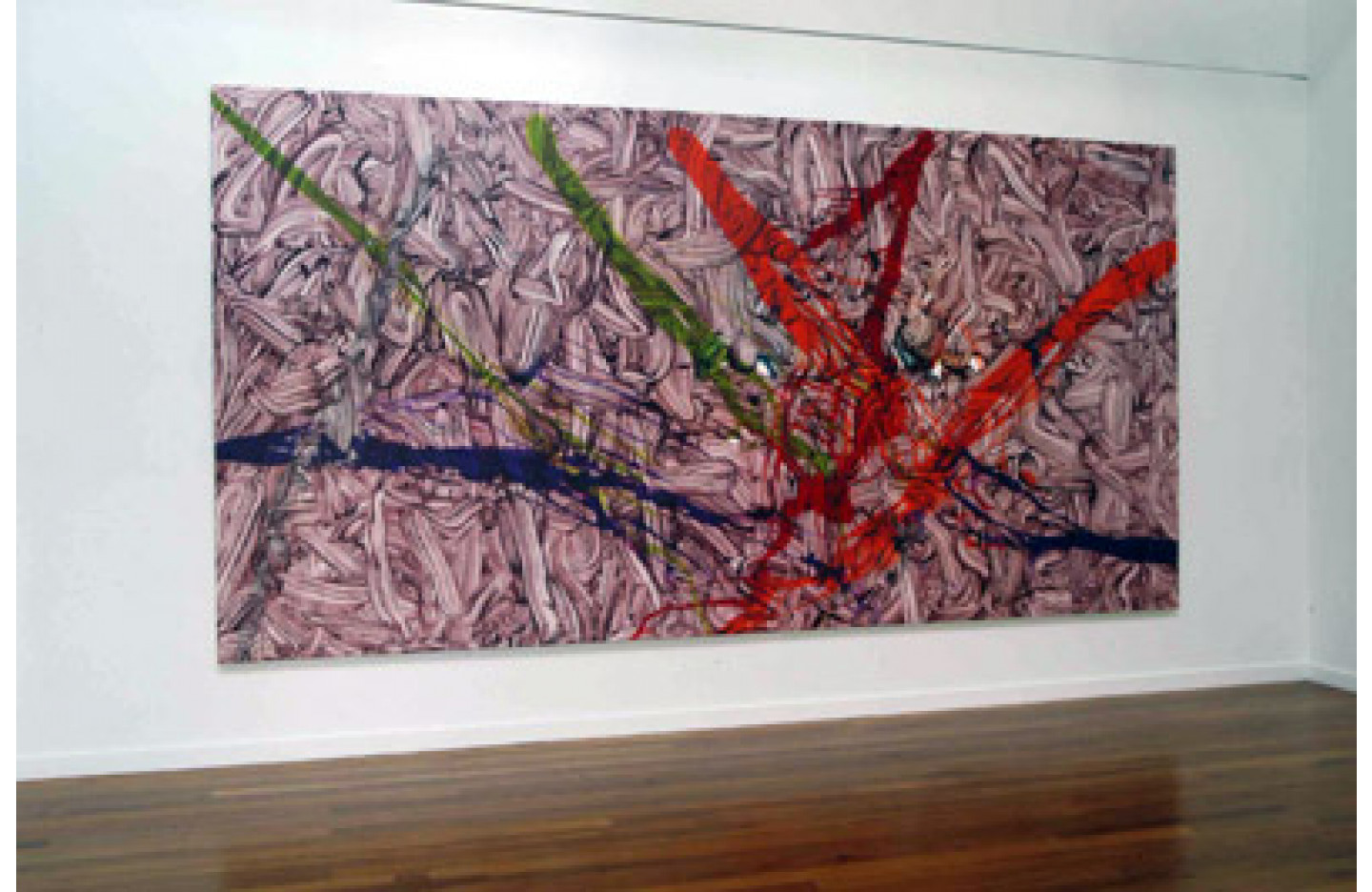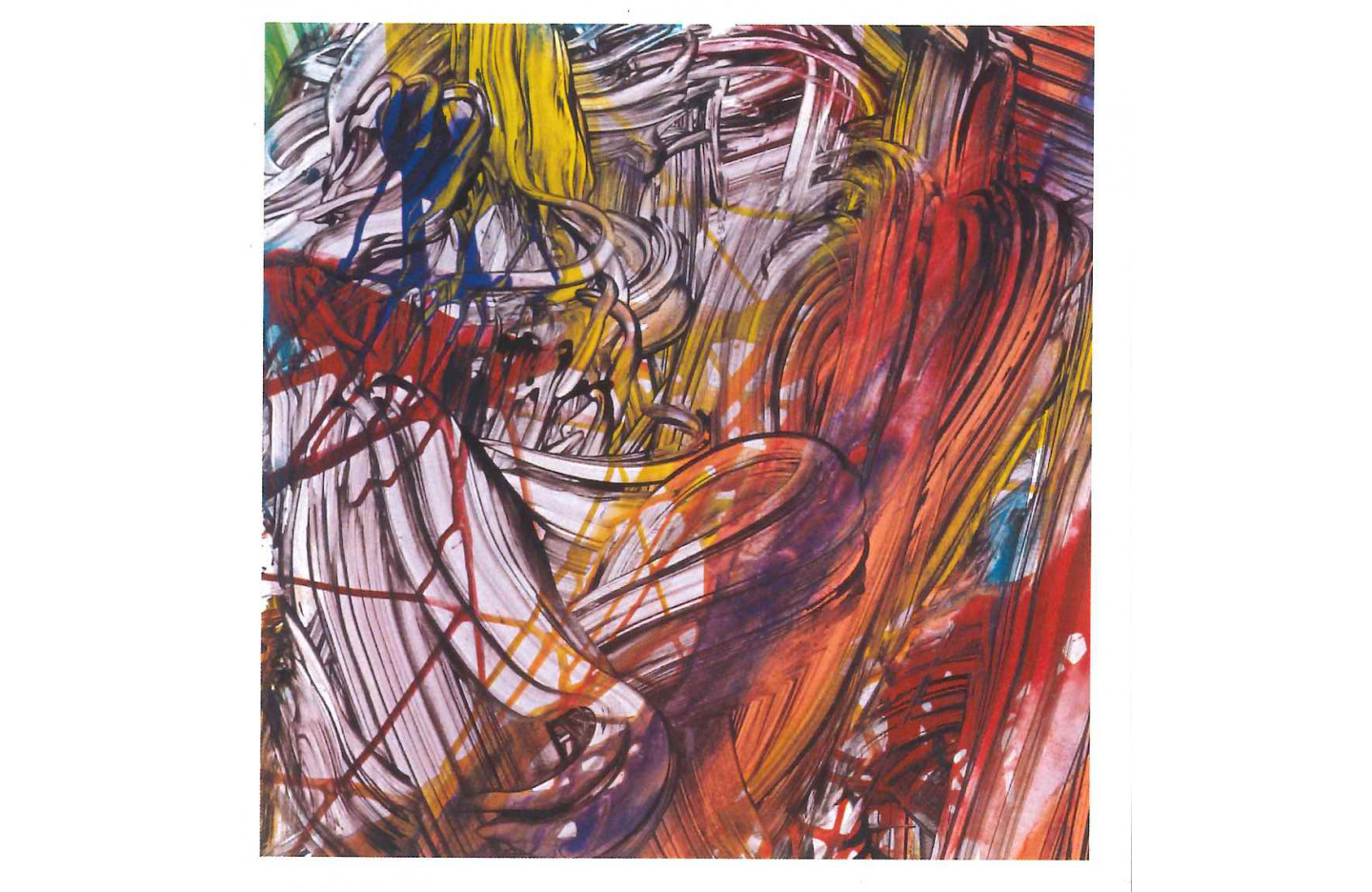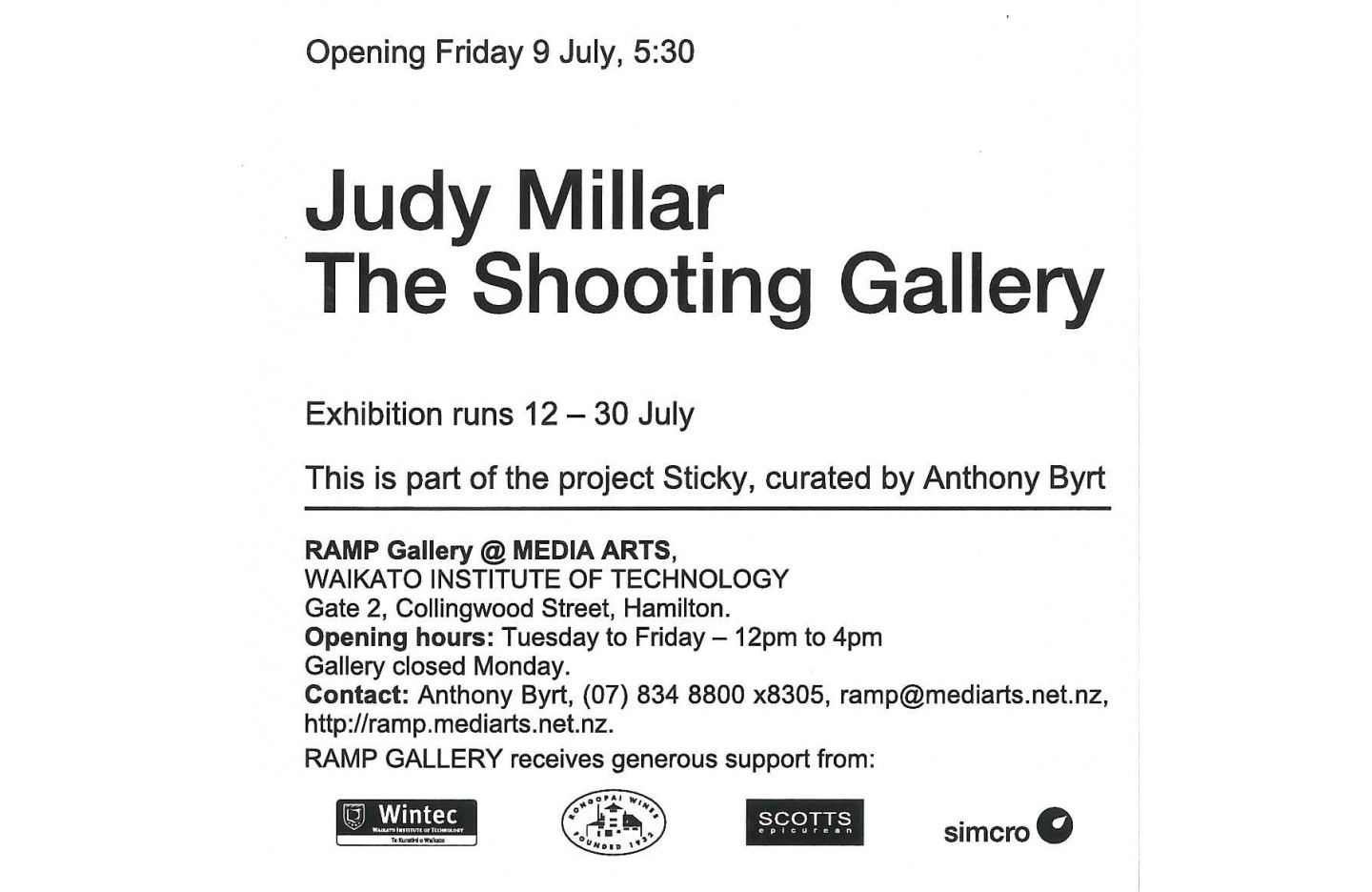The Shooting Gallery
- 12 Jul - 30 Jul, 2004
Judy Millar has become one of New Zealand painting’s leading figures and in some ways, she is a starting point for this project, an artist who addresses painting without apology. Her recent works are known for their ‘gesturalism’ – a feigned expressionism that simultaneously undermines and reinforces Greenbergian art-politics. Ostensibly, they are about surface, the grid, and repetition – abstraction’s classic devices. But while the things she makes can be beautiful, they also raise an eyebrow towards the contemporary art world’s view of abstract painting.
Her work manifests a strange spatial reversal, a sense of being ‘inside out’, hence the title of her recent book, How to Paint Backwards. Her ability to create this space results from her experimentation with materials. Critics tend to focus specifically on questions of materiality when discussing her painting, often returning to her application of paint with a rag or the edge of her hand. While this intimacy between artist, surface and gesture raises the spectre of Abstract Expressionism, her ‘graphic’ strokes are more like those of David Reed, Roy Lichtenstein and Bernard Frize.
But either way, her ‘originality’ is questionable and as a result it’s easy to get trapped either in defending her work for its painterly merits or slamming it for its imitations. The problem with employing this dichotomy though, is Millar’s own awareness of it. Her instructions on ‘how to paint backwards’ aren’t just about how her paintings are made or how she flips space but also about how she flips painting’s history and New Zealand’s strange relationship with it. Consequently, her heroic expressionist posture is actually a carefully formulated historiography.
Extract from Sticky (Ramp Press/Whitecliffe, 2004), by Anthony Byrt

